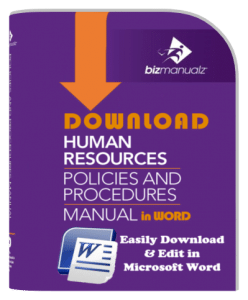What is Business Process Management in Human Resources?

Human Resources is like the glue that holds the rest of the company together. Without an organized and streamlined HR department, everything else can easily fall apart. What is business process management in human resources?
The Importance of Business Process Management in Human Resources
The key to an efficient HR department and running a successful business is having a clear understanding of policies and procedures and a strategy for weaving them into your daily operations. Documenting your core company policies and procedures is one thing, but you must also have an awareness of them at all times and make them a part of everything you do within the company, especially within the HR department. The best way to deploy these procedures and best practices to get a better handle on your day-to-day operations is through Business Process Management (BPM).
What is Business Process Management (BPM)?
Though Business Process Management (BPM) may sound like an application or software, it is simply a term for managing your day-to-day operations more efficiently. It is a strategy that makes use of all available resources—from your leadership team and employees to your peripherals, and daily tasks—to streamline your processes and maximize your outcomes. In the simplest of definitions, it is about optimizing your operations to run more efficiently.
How BPM Can Streamline and Optimize Your HR Operations
As your HR department is ultimately the one in charge of things like your company finances, salaries and wages, benefits, hiring processes, training, and ensuring policies and procedures are being followed, it is the area of your business that can benefit the most from BPM. While there is a lot that happens outside of the HR department, it is their responsibility to ensure best practices are being used to achieve the company’s goals as a team.
HR Department Processes
Part of BPM is implementing better tools and systems to optimize daily operations. For your HR department, this means finding ways to automate tasks and processes which will ultimately help the company run more efficiently.
When BPM meets Human Resources HR departments can reduce resource requirements and save time and money by automating and simplifying the following:
-
- Automate HR processes
- Onboarding processes and tasks
- Leave requests
- Benefits enrollments
- Timesheets
- Training
- Policy changes
- Salary and wage changes
- Performance reviews
Automating HR Processes
Business process automation of the above HR processes and any other tasks or daily operations will make the lives of those in your HR department easier, but it will also ensure your employees are better informed and ensure everyone is on the same page.
-
- Provide better solutions: When everyone is on the same page and processes are streamlined, it is easier to develop best practices and respond quickly to changes. Through BPM, your HR department will have more time and resources to provide better solutions should problems arise or demands change.
- Promote collaboration: Better process management also means your HR department should train managers and others in leadership roles how best to uphold and implement company principles and procedures. By doing so, managers will become better role models and coaches for all departments and teams, which will promote trust and collaboration.
-
- Improve experiences: Another essential component to running an efficient company is collecting feedback and using it to improve processes and experiences. Your HR department’s BPM should always involve collecting data such as feedback and input from customers, employees, and managers to see where improvements can be made to enhance experiences.
BPM and HR Burnout

Writing your HR Policies Procedures Manual using easily editable MS-Word Templates is a fast, simple process.
When HR departments aren’t running optimally, the rest of the company suffers. Unfortunately, this often results in poor communication and experiences, which leads to employees who feel frustrated and undervalued. And when your employees aren’t happy, your retention rates will drop.
These days, it’s much more common for employees to set boundaries and seek positions with companies that emphasize employee satisfaction and provide a better work-life balance. If they feel underappreciated, stressed, and burnt out, they will quit without a second thought. Companies with poor process management can especially suffer during the holidays when burnout rates are higher.
BPM doesn’t just improve experiences and retention rates with employees, but it can also have an effect at a higher level with your executives and corporate decision-makers as well. Burnout amongst those at executive levels is even more of an issue than it is with employees. However, when the company is running more efficiently with improved process management, it takes some of the weight and stress off the shoulders of your company’s leaders.
Business Process Management in Human Resources
Optimizing daily operations to maximize outcomes is nothing new. However, there are new trends specifically within HR departments that seek to improve satisfaction rates and help companies run more efficiently. For example, using new technology to automate processes, prioritizing employee experience and mental health, and adopting remote-friendly work environments are all trends on the rise.
For many, these aren’t seen as added benefits or trends that will fade with time; they are necessities—and the quickest way to make all of these changes is to have a better strategy for Business Process Management.
















Leave a Reply